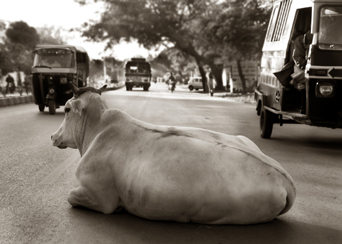Animal research and the law
Only one of the organisms included in the list is not an animal: the E. coli bacterium. At least, that is the straightforward scientific answer. However, you may be surprised to learn that in many countries the law regulates what is, and what is not, an animal – at least where research is concerned. Such definitions determine which species are covered by the guidelines for psychologists working with animals. According to the Animals (Scientific Procedures) Act 1986, which legislates for research in the UK, only species that are vertebrates (possess a spinal column) and one single invertebrate, the octopus (octopus vulgaris), are legally defined as ‘animals’ when it comes to research. The same category of living things is also protected by the Animal Welfare Act 2006. Under this definition, the only ‘animals’ in the list are the rat, cat, dog, horse, dolphin and gorilla: the coral, woodlouse, crab, mosquito and scorpion are not legally ‘animals’. As for the second question, there are really no right or wrong answers. You were asked ‘which ones you would permit animal research on’ and that is a matter of personal ethics. However, you now know which of the species listed are protected by law (at least in the UK).
So there are many animals, or should we say ‘organisms’, that are not covered by any legislation, and for research purposes do not count as ‘animals’. There is no law protecting lobsters, spiders or mosquitoes (and especially not the E. coli bacteria) from being used in any way whatsoever in research. The British Psychological Society (BPS) does recommend that the ethics standards of work with protected species should also be maintained with organisms not covered by the relevant legislation, but this is just a recommendation.
Even among the vertebrates, further distinctions are made. Can you guess which animals receive extra protection? It is horses, cats, dogs and primates. In the case of primates, the reason is undoubtedly their genetic proximity to humans and the frequency with which they are used in research, but what about cats, dogs and horses?
The reason is that these animals are regarded by many humans as occupying a special place in the animal world, given that they are kept as pets. However, humans don’t always agree on which animals are pets. Whereas most people in the UK would not consider eating a dog, in parts of Asia dogs are considered a delicacy. Horses, donkeys and a host of other animals that people in some countries treat as companions adorn many a menu in other countries. So, some animals are a ‘man’s (or a woman’s) best friend’ whilst others are ‘vermin’ or ‘food’. In the same way, some species are regarded as ‘beautiful’, ‘cute’ or ‘intelligent’, while others are treated as less so. What all of this suggests is that differentiation within the animal world is not always based on strict scientific criteria, but rather on cultural sensitivities.

